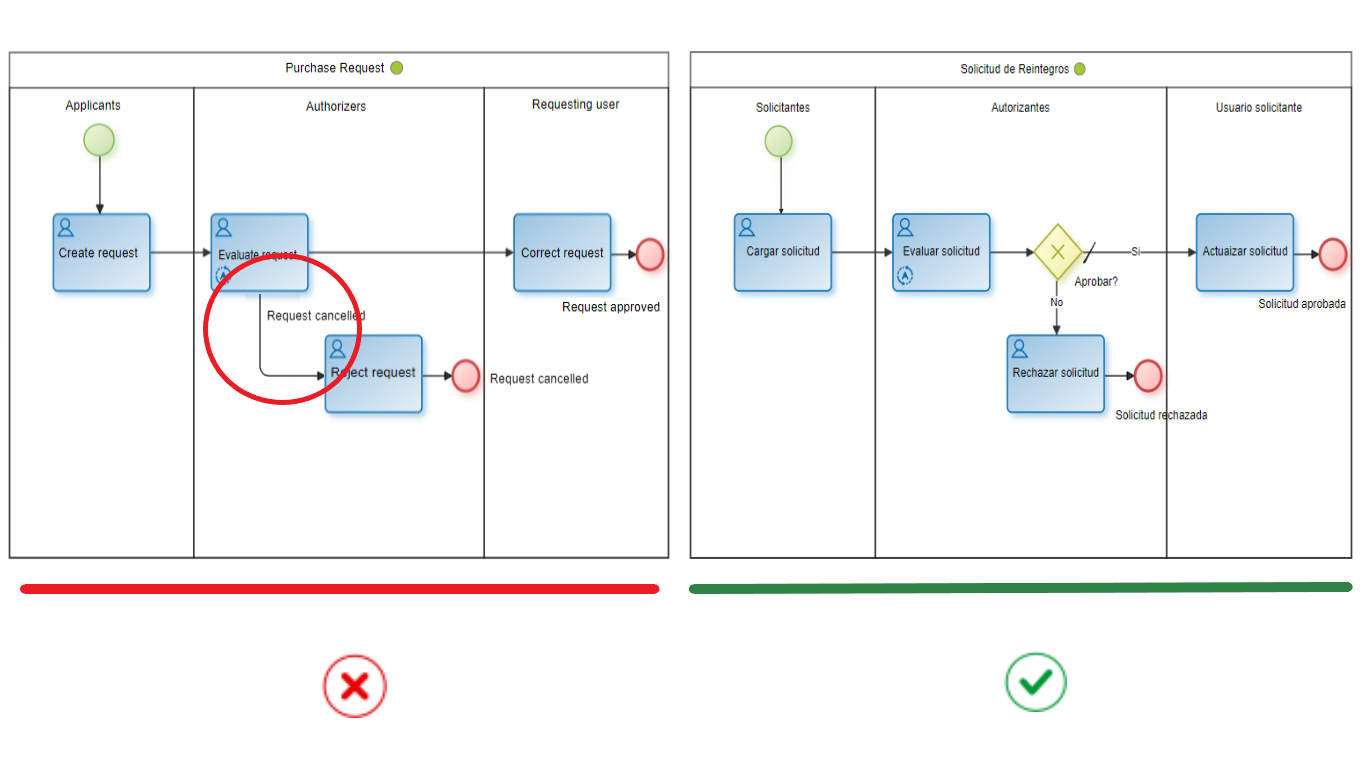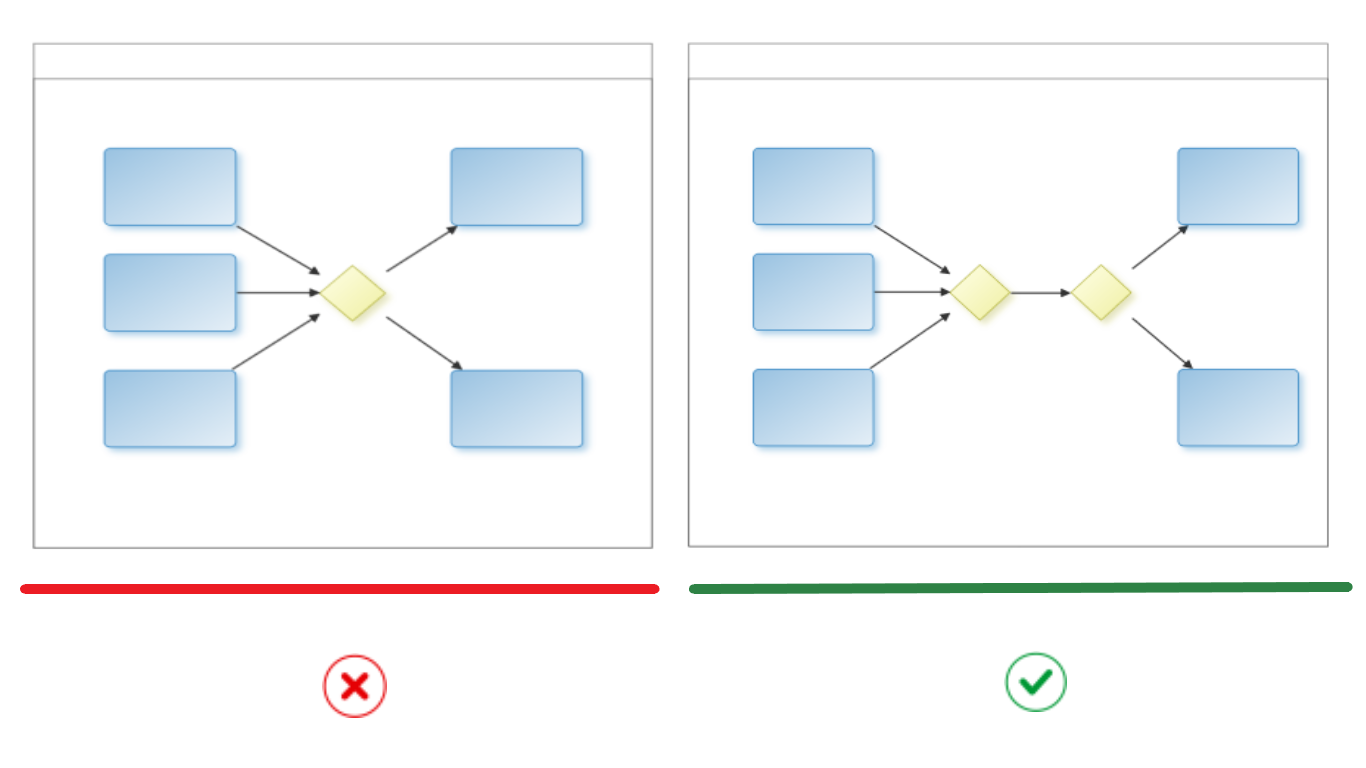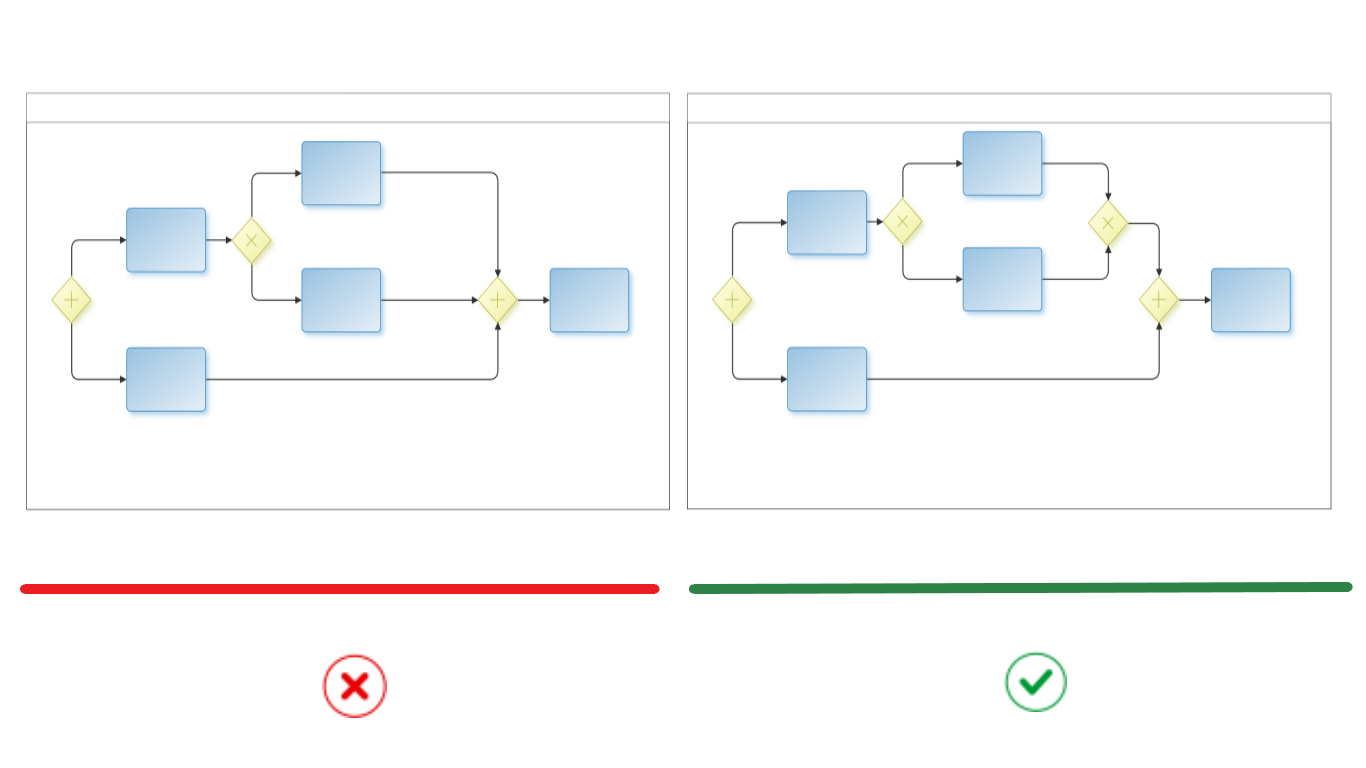Gateways Modeling
Good Practices
Name
•All divergence gateways must be named.
•A question is generally used that represents the decision or logical condition evaluated. For example: "Authorized Request?".
•All outgoing flows must be named.
•Their name must represent the responses or possible values of the condition evaluated.
For example, if a gateway is called "Request Authorized?", Its outgoing flows should be called "Yes", "No".
Gateways for Forks
•Flows must not be branched using tasks.
•Gateways should always be used for this purpose.

Gateways for Synchronization
•To synchronize flows, it is recommended to always use the same type of gateway that is used to fork them.

Separate the forks and Synchronizations
•It is recommended not to use gateways to join and separate flows at the same time.

Balancing
•Flow branches must be equivalently synchronized.
•The number of flows leaving a fork must be equal to the number of flows that are received in a synchronization.

Exclusive Gateway
Has two representations. The same representation must be used for the entire definition of a process.
![]()
![]()
•It can be used as a fork or synchronization element.
•It is used to represent a fork in the flow, where there are several possible alternatives but only one should be considered.
They are mutually exclusive alternatives.
•These gateways require the definition of a default flow.
This flow represents the path taken when none of the other conditions are met.
We recommend that the most common path, the most probable, is the one that is modeled as the default flow.
•The exclusive gateway can be defined in pairs, one as a divergent element to activate several mutually exclusive paths and if these paths converge, a gateway of this type must be used as a convergent element, to graphically represent the concurrence of the flows.
Parallel Gateway
Its graphic representation is as follows:
![]()
•It can be used as a fork or synchronization element.
•When used as a fork, the output flows do not require conditions as all paths must be followed.
Likewise, it is recommended to put a legend in each flow that represents the condition that was met in order to be able to transit such flow.
•When the gateway is used as a convergent element (synchronization), all the predecessor activities are expected to finish their execution.
•The parallel gateway must be defined in pairs, one as a divergent element to activate several parallel paths, and the other as a convergent element, to synchronize the previously activated paths.
Inclusive Gateway
Its graphic representation is as follows:
![]()
•It can be used as a fork or synchronization element.
•The inclusive gateway as a fork element is used at a point in the process where one or more alternatives may be viable based on a condition.
For example, after creating a document, it must be approved by the corresponding offices according to the type of document created.
To implement the multi-decision pattern it is necessary to use the inclusive gateway.
This gateway allows one or more paths to be enabled according to the evaluation of the conditions of each flow.
•If none of the conditions are met, a default flow can optionally be defined, that takes into account this situation.
If this default flow is not defined, then an error is obtained stating that there are no viable alternatives.
•The inclusive gateway as a convergence element is activated if at least one case reaches the inclusive gateway and if some other case of the processes execution that could reach the gateway (the canceled threads are not considered) arrived previously.
•The inclusive gateways can be defined in pairs. That is, one as a divergent element that generates parallel activities, and then that converge in an inclusive gateway of convergence, which synchronizes the previous paths.
